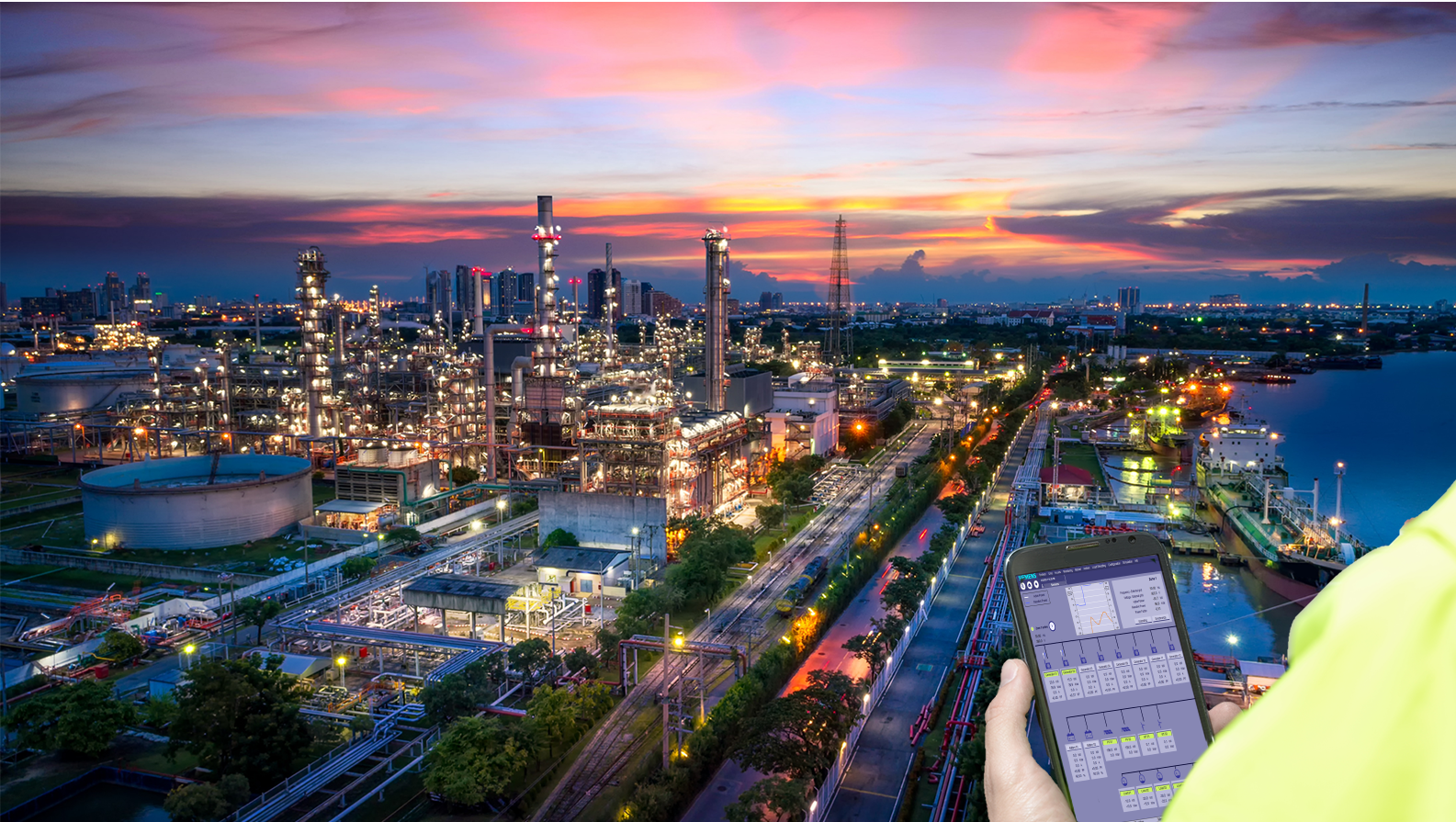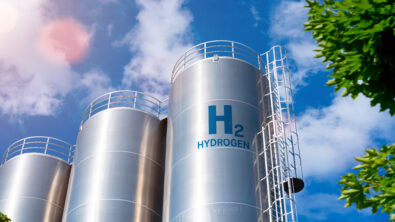Digital lifecycle excellence for energy and utility companies

Sustainability and technology are driving change across the entire energy and utilities sector. While some organizations are working double-time to reach emissions goals, others are learning to leverage today’s digital tools to meet sustainability targets, improve operations and gain a competitive advantage. This process is known as a digital transformation or a reimagining of an existing business model.
Artificial intelligence, virtual reality, machine learning—these technologies no longer exist within pipe dreams. Today, they’re used in almost every aspect of our day-to-day lives. In the business world, digital innovations allow organizations to respond faster to change. This is especially vital for the energy and utilities industry as demands for renewable energy alternatives and decarbonization rise.
Deploying the right digital solutions can help E&U companies face these growing challenges and prepare for the unpredictability of today’s energy and utilities market. We can look at some of these challenges and see how Siemens Digital Lifecycle Excellence allows E&U businesses to turn complexity into a competitive advantage.
Efficiency matters in the energy and utilities sector
E&U companies bear a tremendous burden to increase sustainability efforts across business operations. The utilities sector alone accounts for almost 40% of carbon emissions, more than any other industry worldwide. With calls for net-zero emissions by 2050, there’s more pressure than ever to prioritize sustainability in business and operating models. While this is a lofty task, leveraging technology is one way E&U companies can put their best foot forward to decarbonize while reducing the risk of non-compliance.
Energy Consumption
By leveraging today’s available technology, companies can create well-developed infrastructure plans that help meet sustainability targets and save on costs associated with operations. For example, building and running a power plant, or any infrastructure, produces large amounts of operational carbon. Once an installation is complete, operational carbon is generated from the energy it takes to light, cool, and heat a building. Additional carbon is emitted in producing materials used for construction.
Digital twins, virtual reality or other simulation software are the best tools for helping companies plan out major projects. Using a simulation-driven approach to design allows businesses to verify plant processes before construction ever begins. Other capabilities include mapping out construction areas to simulate how equipment or systems will operate during the building process and adjusting to optimize the process as needed. Predicting construction execution can reduce the risk of change orders, excessive production costs and overall energy consumption.
Slow Processing
Implementing new technology is the first step toward more effective processes and improving sustainability, but how can an organization ensure they’re using these tools to their full potential? Integration is critical when utilizing digital tools. Without proper integration of each piece of software, data gets stuck in silos, which stops essential information from getting to the appropriate source. This leads to slow and inefficient processes.
This Mendix study details how digital disconnect affects business operations. In the survey, 74% of IT professionals and stakeholders reported having a pipeline of unanswered requests. This resulted in 61% of stakeholders saying IT could not deliver on nearly half of their project ideas.
With gaps in data exchange, businesses can’t communicate effectively or adjust to change fast enough—a significant disadvantage in today’s volatile energy and utilities market. Tools that allow network collaboration can help E&U companies reach sustainability targets while establishing faster workflows.
Compliance and Risk Management
One of the biggest concerns for E&U companies is reducing the risk of non-compliance across an entire enterprise. Already heavily regulated, new calls for net-zero emissions and renewable alternatives have put intense pressure on organizations to develop more efficient processes. On top of that, the use of the cloud and Internet of Things (IoT) devices to store and exchange data has tightened data privacy requirements.
Now more than ever, it’s important for organizations to execute consistently to prove production methods are compliant. Going forward, E&U companies will need an integrated, traceable system to track, store, and manage data, suppliers and materials.
A modern approach to asset management
Leveraging software that enables technology like digital twins or automation tools can give E&U companies the competitive edge they need to thrive in today’s market. The problem is the market is saturated with hundreds of software options, and overwhelmed business owners are left stringing together several solutions into one process. When these solutions aren’t interconnected, the chance of non-compliance, and even poor product performance, increases.
Siemens set out to help E&U companies get the most out of today’s technology by developing Digital Lifecycle Excellence (DLE) solutions. DLE works as a digital thread to connect the digital world with physical objects or processes. The tools included in DLE work together to organize and consolidate data and present opportunities to increase competitiveness. This means E&U companies can add solutions throughout their product lifecycle without worrying whether they are compatible.
Digital Lifecycle Excellence solutions provide simulation tools that allow E&U companies to establish comprehensive, closed-loop digital twins of a plant, facility, or product. That digital twin generates insights that can be used to reach sustainability targets, reduce cost and the risk of non-compliance, and to improve quality and safety.
Additional solutions include:
Environmental Compliance Management – Allows E&U companies to monitor compliance requirements by providing efficient processes for hazardous substance management, supplier disclosures, regulatory reporting, and a sustainability framework.
- Capabilities:
- Automated reporting on sustainability and regulatory compliance
- Substance control framework that includes eco-design processes
- Accurate reporting on products or equipment against environmental and regulatory compliance
Production Planning and Scheduling – These tools use advanced math to calculate production schedules while considering all possible disruptions. It allows equipment OEMs, EPCs or owner-operators to evaluate multiple production scenarios to react quickly to any changes.
- Capabilities:
- Easily visualize a production schedule and edit changes using linked plots and grids
- View, search and interact with schedules to track the progress of orders, assess production performance and provide up-to-the-minute to-do lists
Low-code Application Development – A low-code platform empowers stakeholders and employees to work together in a collaborative environment to define requirements, process feedback, manage deployment, and monitor applications.
- Capabilities:
- Builds apps ten times faster with 70% fewer resources
- Integrates capital assets and data proficiently
- Promotes real-time collaboration between teams
There are multiple underlying capabilities organizations can leverage within DLE. From managing complicated capital projects to simulating the finest detail of a gas turbine design, these solutions can help E&U companies address the pressing issues mentioned above. Taking a holistic approach to managing data will be a differentiator for future-ready industry leaders going forward.
Transforming complexity into a competitive advantage
In an industry rocked by a global pandemic, strict regulatory requirements, and renewable energy demands, today’s E&U companies must leverage the value from their physical assets and enterprise data to improve efficiencies, reduce costs, and ensure compliance. Taking a Digital Lifecycle Excellence approach to organize and manage this complex data helps organizations seize opportunities to become more competitive.
Learn more about Siemens Digital Lifecycle Excellence (DLE) solutions and all of its underlying capabilities here.
Comments
Leave a Reply
You must be logged in to post a comment.



Digital Lifecycle Excellence refers to the integration of data-driven insights, automation, Drive Mad and advanced analytics across the entire lifecycle of energy and utility assets.
This article on digital lifecycle excellence for energy and utility companies is spot-on! The focus on how digital tools streamline operations and boost sustainability is really compelling—especially the bit about predictive maintenance saving costs. It’s exciting to see tech driving such practical change in this sector. I’d love a deeper dive into how smaller companies can adopt these solutions without massive budgets. After geeking out over this, I like to switch off with some awesome games at playpharos—a perfect way to unwind after exploring digital innovation!
Predictive analytics reduce unplanned outages, smash karts while augmented reality (AR) aids technicians in complex repairs.
Digital Lifecycle Excellence is crucial for optimizing energy and utility assets. By leveraging data-driven insights and automation, organizations can enhance efficiency, reduce costs, traffic rally and improve decision-making throughout the entire lifecycle. This approach drives innovation and sustainability in the industry.
Energy and utilities, eh? Sounds like a headache waiting to happen! Optimizing the lifespan of assets? Sounds expensive! But, let’s be real, neglecting digital infrastructure is like ignoring a ticking time bomb. Good planning prevents future panic. Speaking of long-term strategy, back in college, I led a team trying to build a website and we totally failed to anticipate server load. Everything crashed during the launch! It was a Slither io level of cluster. We learned a brutal lesson about planning and scalability that day.
fix my speaker is an online tool that uses sound waves to remove water or dust from mobile speakers. It clears the sound and restores the speaker’s performance. Easy to use and effective.
Lottery Sambad is not just a medium for publishing lottery results, it is a name that is closely associated with the dreams, hopes and fortunes of millions of people. It has become a place of trust for ticket holders by providing the results of the draw quickly and reliably at the scheduled time every day. The correct results of various government-approved lotteries in India, including West Bengal, are easily available here. Lottery Sambad not only provides information, but also awakens the possibility of a new day in the minds of waiting people, it is like a silent companion of changing fortunes.
The grainy, low-light visuals and retro camera effects intensify the sense of unease fnaf 1.
capcut pro apk is a great video editing app that comes with premium filters, smooth transitions, multi-track editing, and smart AI tools. It makes it easy to create professional-quality videos. The watermark-free export feature makes it perfect for content creators.
Great read — this piece nicely captures how digital lifecycle excellence can elevate energy & utility operations. The emphasis on integrating digital twins, predictive analytics, and seamless data flows resonates strongly. I’d love to see more on how mid-size players can adopt this approach without massive upfront investment NanoBanana.